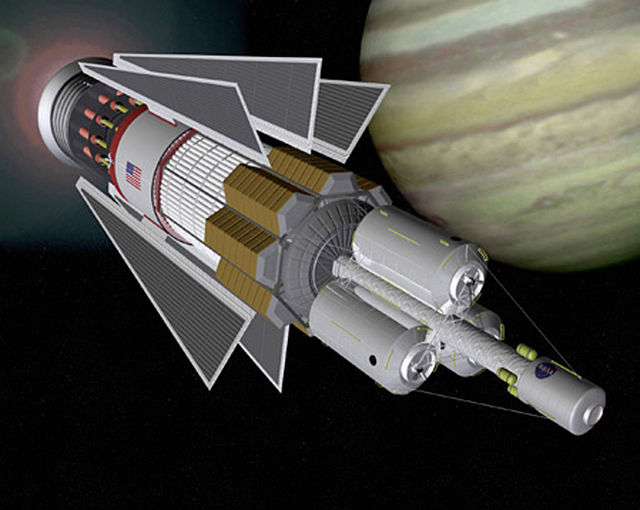Space travel in science fiction
Space travel, or space flight is a classic science-fiction theme that has captivated the public and is almost archetypal for science fiction. Space travel, interplanetary or interstellar, is usually performed in space ships, and spacecraft propulsion in various works ranges from the scientifically plausible to the totally fictitious.
Rocket on cover of Other Worlds sci-fi magazine, September 1951
Science and Mechanics, November 1931, showing a proposed sub-orbital spaceship that would reach a 700-mile altitude on a one-hour flight from Berlin to New York
Still from Lost in Space TV series premiere (1965), depicting space travelers in suspended animation
Roadside replica of Star Trek starship Enterprise
Interstellar travel is the hypothetical travel of spacecraft from one star system, solitary star, or planetary system to another. Interstellar travel is expected to prove much more difficult than interplanetary spaceflight due to the vast difference in the scale of the involved distances. Whereas the distance between any two planets in the Solar System is less than 55 astronomical units (AU), stars are typically separated by hundreds of thousands of AU, causing these distances to typically be expressed instead in light-years. Because of the vastness of these distances, non-generational interstellar travel based on known physics would need to occur at a high percentage of the speed of light; even so, travel times would be long, at least decades and perhaps millennia or longer.
A Bussard ramjet, one of many possible methods that could serve to propel spacecraft
Modern Pulsed Fission Propulsion Concept
Artist's depiction of a hypothetical Wormhole Induction Propelled Spacecraft, based loosely on the 1994 "warp drive" paper of Miguel Alcubierre







